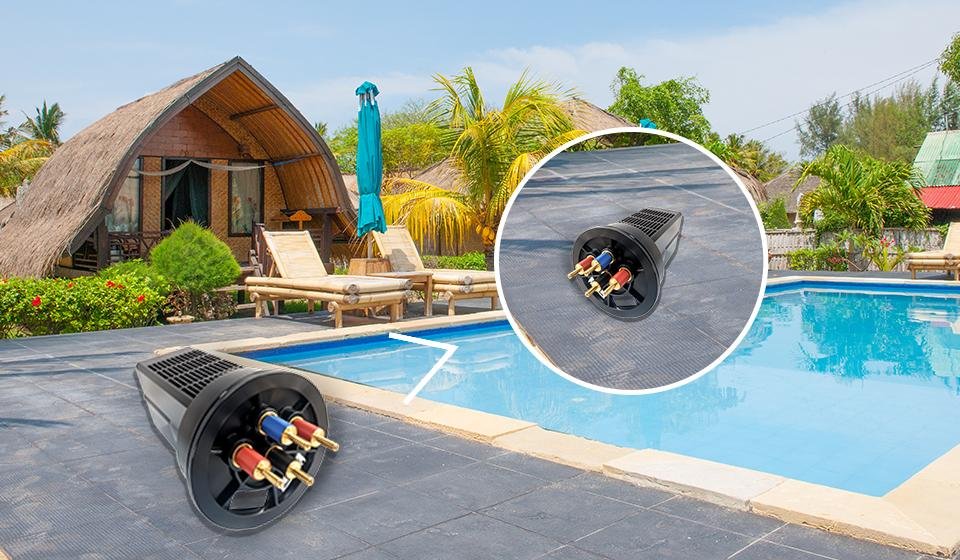Swimming pools are a summer delight, but keeping them clean, clear, and safe requires some basic know-how. One of the most important parts of a saltwater pool is the salt cell, also known as the salt chlorinator cell. It’s the component responsible for turning salt into chlorine, helping to sanitise your pool automatically.
If your chlorine levels are dropping even though your pool is properly maintained, it may be time to consider replacing your salt cell. The good news is, with a little guidance below, chlorinator cell replacement can be straightforward and stress-free.
Signs Your Chlorinator Cell Needs Replacement:
- Reduced Chlorine Production: One of the most common signs that your pool chlorinator cell is no longer working effectively is a noticeable drop in chlorine production. If your pool starts looking cloudy or algae begins to grow, even though you’re keeping up with regular maintenance and salt levels, it likely means the saltwater pool cell isn’t converting salt into chlorine as efficiently as it should.
- Error Codes or Warning Lights: Most modern saltwater pool chlorinators come with control panels that show warnings or error messages. If you see alerts like “Check Cell” or “Low Chlorine Production,” it’s a sign that something isn’t right. While cleaning the cell might fix the issue, if the warning keeps coming back, it’s probably time to replace the cell.
- Visible Wear or Scaling on the Cell Plates: Salt cells are exposed to water, salt, and minerals every day. Over time, this can lead to calcium buildup or corrosion on the metal plates inside the cell. You can try cleaning the cell with a mild acid solution, but if the plates are damaged or heavily scaled despite cleaning, it means the cell is wearing out.
- Increased Pool Maintenance: If you’ve noticed that maintaining your pool has become harder or more expensive, a failing saltwater chlorinator cell might be to blame. You may find yourself adding chlorine manually more often, which defeats the purpose of a saltwater system. If everything else seems fine but the water still doesn’t stay balanced, your salt cell could be the issue.
- Age of the Salt Cell: Most salt chlorinator cells are designed to last 3 to 7 years, depending on how often the pool is used, how well the system is maintained, and the water quality. If your cell is more than a few years old and you’re starting to see performance issues, it’s probably nearing the end of its life.
- High Output Settings with Little Effect: If you’ve set your chlorinator to a high or maximum output and it’s still not maintaining proper chlorine levels, this could be a sign that your cell is no longer functioning properly. Running the system at full power constantly can also wear out the cell faster.
- Frequent “Low Salt” Warnings: Sometimes, salt systems may warn you that salt levels are low even when they’re not. This can happen if the salt cell is failing and giving incorrect readings. If your test kits show that the salt level is fine but your system keeps saying otherwise, the salt cell may need to be replaced.
Benefits of Pool Salt Cell Replacement:
Replacing your salt cell when needed comes with several benefits that can improve both your pool’s condition and your overall experience:
- Consistent Chlorine Levels: A new salt cell ensures your pool stays properly sanitised. You’ll have steady chlorine production, which helps prevent algae, cloudy water, and bacterial buildup.
- Less Chemical Use: With a functioning salt cell, there’s less need for extra chlorine or other chemicals. This saves money and reduces the chance of over-chlorination or chemical imbalances that can irritate skin and eyes.
- Smoother Pool Operation: A working salt cell helps your pool system run more smoothly. The pump and filter won’t need to work overtime to keep the water clean, which can help extend the life of your entire pool system.
- Lower Maintenance Costs: When the saltwater chlorinator cell is doing its job, you won’t need to spend extra on pool chemicals or call in professionals as often. A small investment in a new cell can save you from bigger repair bills later.
- Safer Swimming Environment: Chlorinator cell replacement ensures your pool water stays clean and safe for everyone. Proper chlorine levels help prevent the spread of harmful bacteria and reduce the risk of skin irritation.
- Peace of Mind: There’s nothing like enjoying a swim without worrying about water quality. Replacing your pool salt cell when needed means less stress and more relaxation during pool season.
When it comes to keeping your pool healthy and low-maintenance, choosing the right pool system and setup from the start makes a big difference. That’s why hiring an expert pool builder in Albury is such a smart move. They build pools that are perfectly suited for modern saltwater systems, making future care and pool salt cell replacements much easier. Whether you’re upgrading your existing chlorinator or planning a new build, they offer tailored advice and quality workmanship to ensure your pool runs efficiently for years to come.
Conclusion
Replacing a salt chlorinator cell might seem like a big task at first, but it’s a manageable and worthwhile part of owning a saltwater pool. With a bit of attention and care, you can easily spot the signs that your salt cell needs replacing and take action before small issues become major problems.
Staying on top of this important maintenance step ensures your pool remains a sparkling, safe, and inviting space all season long. So if your water’s looking a little off or your chlorinator just isn’t keeping up, take a closer look at the salt cell; it might be time for a fresh start.



